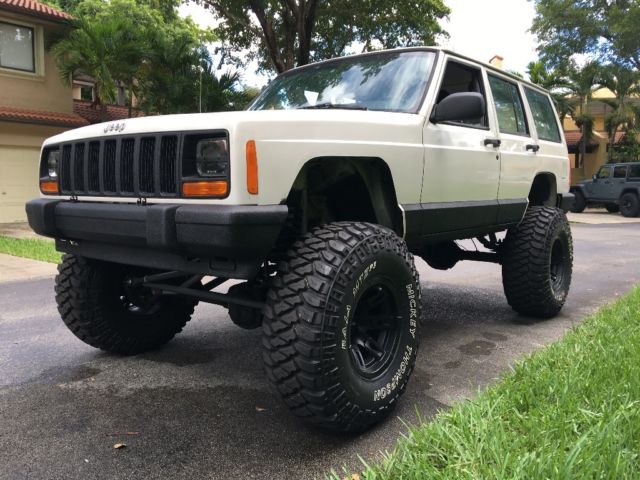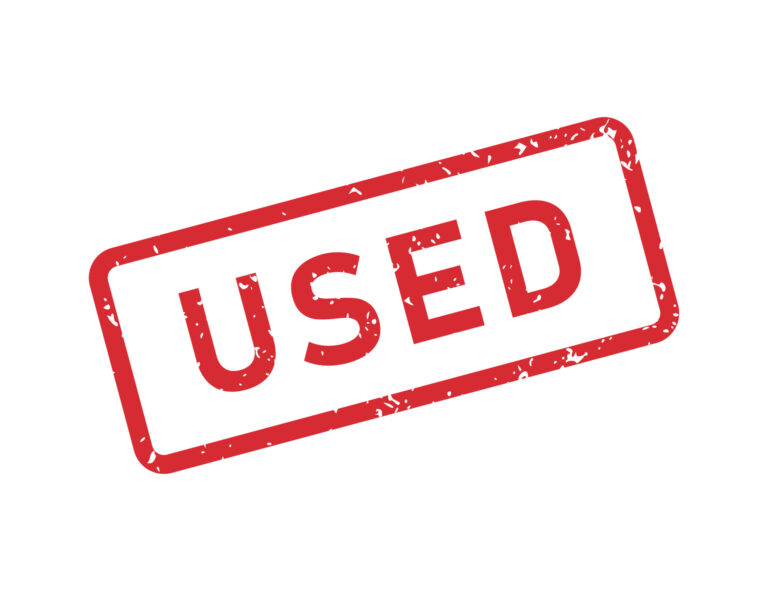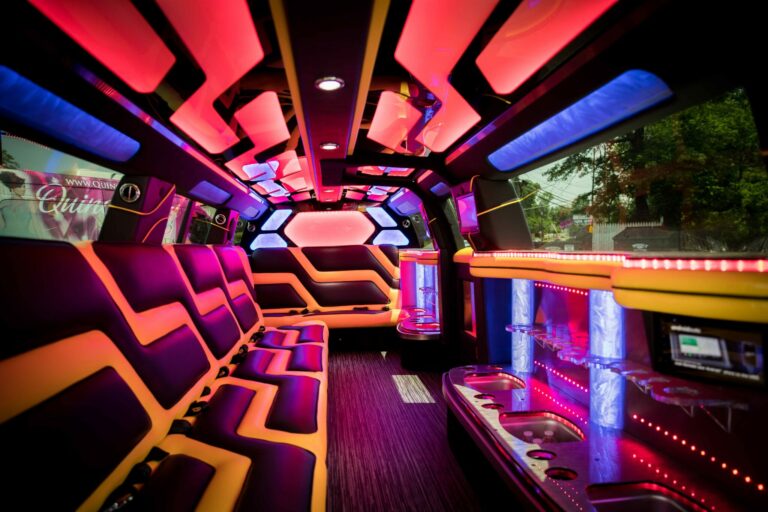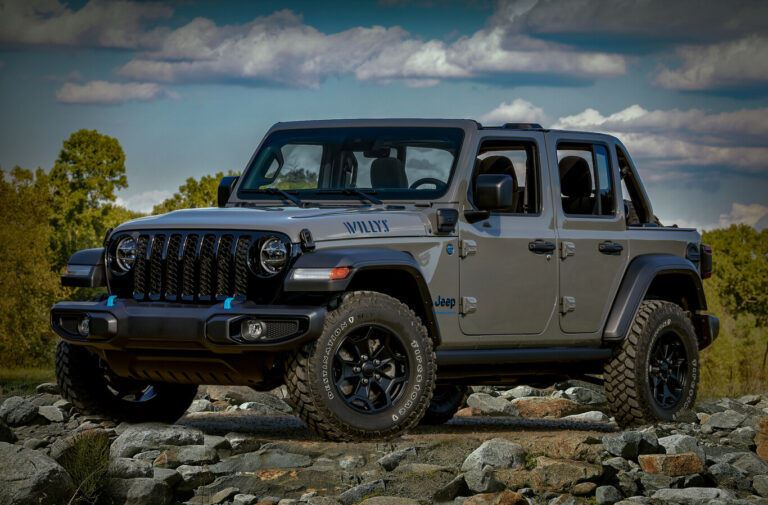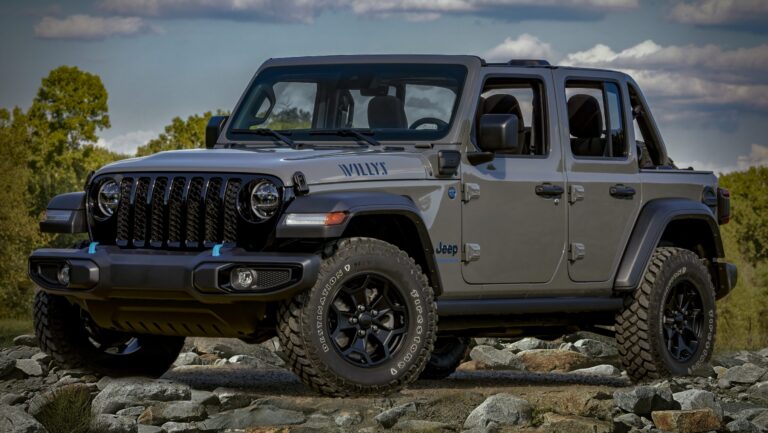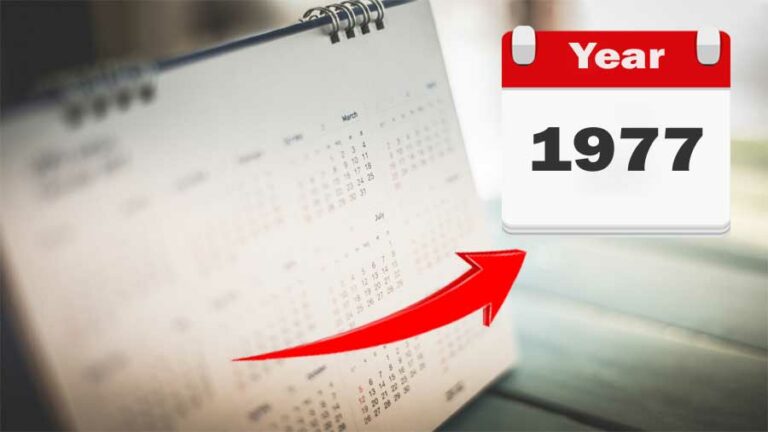1997 Jeep XJ For Sale: Your Comprehensive Guide to Finding and Owning a Legend
1997 Jeep XJ For Sale: Your Comprehensive Guide to Finding and Owning a Legend jeeps.truckstrend.com
The automotive landscape is constantly evolving, yet some vehicles transcend their original purpose to become enduring icons. Among them, the Jeep Cherokee (XJ) holds a special place in the hearts of off-road enthusiasts and daily drivers alike. Specifically, the 1997 Jeep XJ For Sale represents a unique sweet spot in the model’s production run, embodying the rugged simplicity of its predecessors while benefiting from crucial updates that make it a highly sought-after classic today.
This comprehensive guide will delve into everything you need to know when considering a 1997 Jeep XJ for sale, from understanding its enduring appeal to navigating the buying process and preparing for ownership. Whether you’re a seasoned Jeeper or a curious newcomer, prepare to discover why the ’97 XJ remains a compelling choice.
1997 Jeep XJ For Sale: Your Comprehensive Guide to Finding and Owning a Legend
Why the 1997 Jeep XJ Stands Out: A Buyer’s Perspective
The Jeep Cherokee XJ, produced from 1984 to 2001, revolutionized the SUV market. It was a unibody design, lighter and more agile than traditional body-on-frame SUVs, yet still offered legendary Jeep capability. The 1997 model year is particularly desirable for several key reasons:
- Mid-Cycle Refresh: The ’97 XJ received a significant facelift that improved its aesthetics and functionality without compromising its core identity. This included a redesigned, more modern interior with improved ergonomics, dual airbags, and a revised dashboard. The exterior saw updated bumpers, taillights, and a slightly more rounded, yet still distinctly angular, look.
- The Unkillable 4.0L Inline-Six Engine: Powering most XJs, the AMC-derived 4.0-liter "Power Tech" inline-six engine is legendary for its durability and reliability. It’s known to easily surpass 200,000 or even 300,000 miles with proper maintenance. For 1997, it came standard with OBD-II diagnostics, making it easier to troubleshoot and ensuring compliance with emissions standards.
- Robust Drivetrain Options: Buyers could choose between the incredibly reliable Aisin-Warner AW4 automatic transmission or the sturdy Aisin AX-15 manual transmission (less common). Transfer case options included the Command-Trac NP231 (part-time 4WD, excellent for off-roading) and the Selec-Trac NP242 (full-time and part-time 4WD, offering more versatility for mixed driving conditions).
- Unibody Construction: While some might see this as a limitation, the XJ’s unibody design contributes to its lighter weight, better fuel economy (for its class), and surprisingly good on-road manners. Off-road, its rigid structure and relatively compact size allow it to navigate tight trails with ease.
- Massive Aftermarket Support: The XJ has one of the largest and most vibrant aftermarket communities in the automotive world. This means parts are readily available, modifications are endless, and a wealth of knowledge exists online and within clubs to help owners with everything from routine maintenance to complex builds.
- Timeless Appeal: The XJ’s boxy, utilitarian design has aged incredibly well. It possesses a rugged charm that newer, more complex SUVs often lack, making it a cult classic that continues to appreciate in value, especially clean examples.
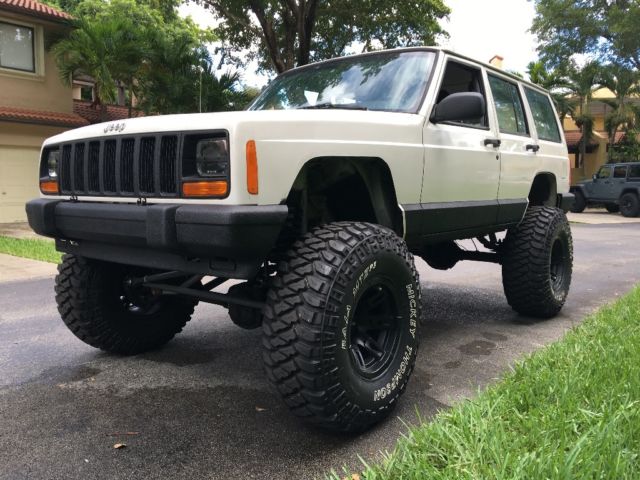
What to Look For: Essential Pre-Purchase Inspection Points
When seeking a 1997 Jeep XJ for sale, a thorough inspection is paramount. These vehicles are now over 25 years old, and their condition can vary wildly.
-
Rust, Rust, Rust: This is the XJ’s Achilles’ heel, especially in areas prone to road salt.
- Rocker Panels: Check thoroughly, inside and out. These are notorious for rusting from the inside out.
- Floorboards: Lift the carpets, particularly under the front seats and in the cargo area.
- Frame Rails/Unibody Stiffeners: Inspect the main structural rails, especially near suspension mounting points.
- Rear Quarter Panels/Wheel Wells: Look for bubbling paint or holes.
- Doors & Hatch: Check bottom edges and around window frames.
- Underbody: Inspect brake lines, fuel lines, and exhaust for severe corrosion.
-
Engine (4.0L I6):
- Oil Leaks: Common areas include the rear main seal (expensive to fix but often minor), valve cover gasket, and oil filter adapter. A small leak might be manageable, but significant puddles are a red flag.
- Cooling System: Overheating is a common XJ issue. Check the radiator (look for cracks, leaks, or clogged fins), water pump, thermostat housing, and fan clutch (ensure it engages properly when hot). Look for signs of coolant in the oil (milky) or oil in the coolant (slimy).
- Exhaust Manifold: Listen for ticking noises, especially when cold. Cracks in the exhaust manifold are very common but usually not critical, though they can affect emissions and noise.
- Crank Position Sensor (CPS): A common failure point that can cause no-start or stalling issues. Hard to diagnose without it failing, but something to be aware of.
-
Transmission & Transfer Case:
- AW4 Automatic: Shifts should be smooth, without harsh clunks or slipping. Check the fluid – it should be red, not brown or burnt-smelling.
- AX-15 Manual: Test the clutch engagement and ensure smooth shifts through all gears. Listen for grinding noises.
- Transfer Case (NP231/NP242): Engage 4WD (both 4-High and 4-Low) if possible. Listen for grinding or clunking. Check for leaks around the seals. Ensure the linkage for 4WD selection works freely.
-
Axles:
- Leaks: Check the differential covers and axle seals for fluid leaks.
- Noise: Listen for hums or whines during driving, which could indicate worn gears or bearings. Most 1997 XJs will have a Dana 30 front axle and a Chrysler 8.25" (preferred) or Dana 35 (weaker) rear axle. The Dana 44 rear is rare but highly desirable.
-
Suspension & Steering:
- "Death Wobble": This is a violent, uncontrollable shaking of the front end, usually triggered by a bump at highway speeds. It’s caused by worn components in the front suspension and steering. Inspect the track bar (bushings and joint), tie rod ends, ball joints, control arm bushings, and steering box for play.
- Sagging Rear: The leaf springs in the rear are prone to sagging over time, leading to a "squatted" appearance. This affects ride quality and load-carrying capacity.
- Shocks: Look for leaks or excessive bounce.
- Bushings: Inspect all rubber bushings for cracks or deterioration.
-
Electrical & Interior:
- Power Windows/Locks: Test all power accessories. Window regulators are a common failure point.
- HVAC: Ensure the heater and A/C work properly. Check fan speeds and blend door operation.
- Dashboard Lights: All warning lights should illuminate briefly on startup and then turn off. A persistent "Check Engine Light" requires an OBD-II scanner.
- Headliner: Sagging headliners are common; assess if you can live with it or factor in repair costs.
- Seats: Check for tears, stains, and proper adjustment.

Understanding Trim Levels and Configurations
The 1997 XJ came in various trim levels, influencing features and sometimes drivetrain components:
- SE: The base model, often 2WD, manual windows, vinyl seats. Simple and robust.
- Sport: A popular trim, offering more features like power windows, cloth seats, body-colored flares, and usually 4WD.
- Country: Aimed at a more upscale market, featuring chrome accents, leather or premium cloth, woodgrain interior trim, and often Selec-Trac.
- Limited: The top-tier luxury trim with full power options, leather, and all available amenities.
You’ll also find 2-door and 4-door configurations, with the 4-door being far more common and practical. Most XJs will be 4WD, but 2WD versions exist and can be good for mild climates or custom builds.
The Value Proposition: Pricing and Market Trends
The price of a 1997 Jeep XJ for sale varies significantly based on condition, mileage, rust, modifications, trim level, and geographical location. The XJ market has seen an appreciation for clean, unmolested examples in recent years, turning them from cheap beaters into desirable classics.
Here’s a general price guide:
| Category | Condition Description | Estimated Price Range (USD) | Key Factors Affecting Price |
| Project Vehicle | Requires significant structural or mechanical work, may be a salvage title. | $1,000 – $3,000 | High mileage, accident damage, severe rust, multiple mechanical issues. Ideal for a full restoration or custom build. |
| Daily Driver | Runs and drives well, minor cosmetic flaws, possible small mechanical needs. | $3,500 – $7,000 | Moderate mileage, light to moderate rust, generally reliable for regular use. May be stock or have basic, tasteful mods. |
| Well-Maintained | Excellent cosmetic and mechanical condition, minimal to no rust, clean interior. | $7,500 – $12,000 | Lower mileage, comprehensive service records, no major issues. Might have some desirable, well-executed modifications. |
| Show/Collector | Pristine, very low mileage, absolutely no rust, original or perfectly restored. | $12,500 – $25,000+ | Extremely rare, often original owner or meticulously cared for. Specific trims (e.g., a clean 2-door Sport or Limited) command top dollar. |
| Heavily Modified | High-end off-road build, custom fabrication, specific performance components. | $8,000 – $20,000+ | Price heavily dependent on the quality of modifications, the components used (axle swaps, long arm kits, engine upgrades), and professional build standards. Can be a great value if done right. |
Note: These are estimates. Always consider your local market and the specific vehicle’s condition.
Common Modifications and Their Impact on Value
The XJ is a blank canvas for customization. Modifications can significantly alter a vehicle’s value:
- Lift Kits: Ranging from mild (2-3 inches) to extreme (6+ inches), quality matters. A well-installed lift from a reputable brand (Rubicon Express, Old Man Emu, BDS) with proper steering correction can add value. A cheap, poorly installed "budget boost" can detract.
- Larger Tires: Often accompany lift kits. Ensure the drivetrain (axles, gears) is compatible with larger tires, or value might suffer.
- Aftermarket Bumpers & Armor: Steel bumpers, rock sliders, and skid plates enhance off-road capability and protection. Well-fabricated pieces add value.
- Engine Performance Upgrades: Cold air intakes, exhaust systems, and minor tuning can improve performance, but major engine swaps might only appeal to specific buyers.
- Axle Swaps: Upgrading the rear Dana 35 to a stronger Chrysler 8.25" or Ford 8.8" (or even Dana 44/60) is a common and desirable modification that adds significant value for serious off-roaders.
- Interior Upgrades: Modern stereo, upgraded seating, or LED lighting can enhance daily usability.
Impact on Value: Well-executed, functional, and tasteful modifications, especially those that address known XJ weaknesses (e.g., rust repair, cooling system upgrades, stronger axles), can increase a vehicle’s value to the right buyer. However, extreme or poorly done modifications can severely limit the pool of potential buyers and may even lower the value. Stock, unmolested XJs in excellent condition often command the highest prices for collectors.
Buying Tips and Best Practices
- Set a Realistic Budget: Don’t just factor in the purchase price. Account for immediate maintenance (fluids, filters, spark plugs), potential repairs (tires, brakes, suspension components), and any desired modifications.
- Research Locally: Use online marketplaces (Craigslist, Facebook Marketplace, AutoTrader, dedicated Jeep forums) and local classifieds. Be prepared to travel for the right vehicle.
- Ask for Records: Request service history, maintenance receipts, and any documentation of past repairs or modifications. This provides insight into how well the vehicle has been cared for.
- Bring a Knowledgeable Friend/Mechanic: If you’re not mechanically inclined, bring someone who is. A second pair of eyes, especially an experienced one, can spot issues you might miss. Consider a pre-purchase inspection by a trusted mechanic, particularly one familiar with Jeeps.
- Test Drive Thoroughly:
- Cold Start: Listen for strange noises (ticking, knocking).
- City & Highway: Check for smooth acceleration, braking, and steering. Listen for driveline noises (whines, clunks). Pay attention to "death wobble" symptoms at highway speeds.
- 4WD Engagement: If safe and appropriate, test 4-High and 4-Low engagement. Listen for grinding.
- Brakes: Test stopping power, pedal feel, and listen for squeals or grinding.
- Check VIN and Ensure the VIN on the vehicle matches the title. Look for any salvage, rebuilt, or flood titles, which can significantly affect value and insurability.
- Be Patient: The perfect XJ might not appear overnight. Don’t rush into a purchase.
Challenges and Solutions for 1997 XJ Ownership
Owning a vintage vehicle comes with its quirks. Here are common challenges and their solutions:
- Rust:
- Solution: For minor surface rust, wire brushing and rust encapsulating paint can work. For structural rust (rocker panels, floorboards), professional welding and panel replacement are often required
